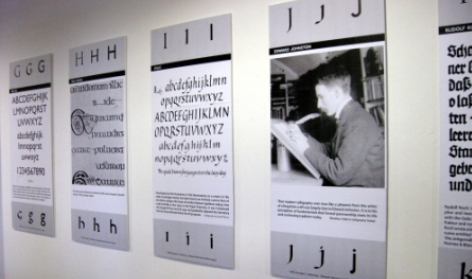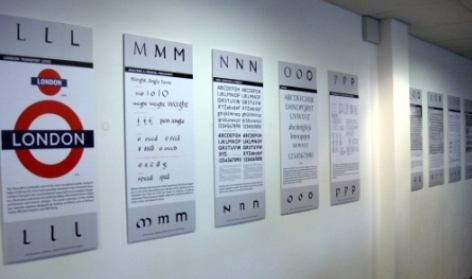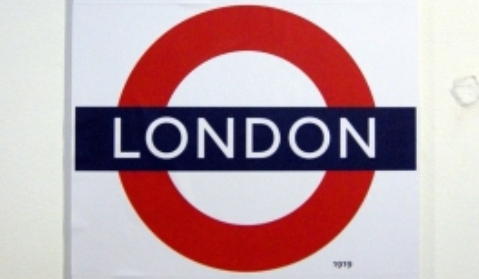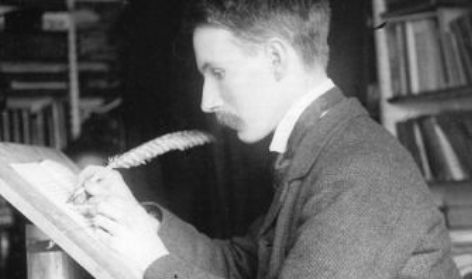Lettering: The Legacy of Edward Johnston
Advancing the understanding of Edward Johnston and his legacy
Project leader: Eiichi Kono, University of Brighton with Gerald Fleuss, Edward Johnston Foundation and Dr Rowan Watson, V&A
Abstract
This project provided a consolidated learning space for HE design students by bringing together collections and material from partnership and other archival collections to advance the understanding of Edward Johnston and his legacy in terms of his rediscovery of the fundamentals of formal handwriting and lettering and its continuing and widened relevance in the contemporary digital world (from electronic books to directional signage).
In collaboration with the curator at the V&A and curatorial colleagues at the RIBA, and in the design archives at Brighton, the project examined the material located in all archives and in parallel include fresh exploration of the Edward Johnston Foundation’s archive in Ditchling, Sussex with the aim of making it accessible to students in Higher Education as well as other researchers and students both physically and on-line. Links to on-line materials located in other collections were used to enhance the teaching materials and online effectiveness of the materials developed.
Second strand
A second strand was the design of an educational programme for practice-based learning at Levels 2 and Masters to explore the relevance of Johnston’s principles to contemporary letter design. The historical thread informing the development of letterform through the ages, forming the major element in Johnston’s teaching, had virtually disappeared in the educational environment and the importance of re-establishing it is timely. Without the knowledge of this tradition further development in, for instance, the field of type design is stultified. These teaching materials were tested by introducing them to students on the extension studies courses at Brighton, where they were automatically be drawn from a wide range of disciplines.
The project was further enhanced and evaluated by outreach to a wider audience of learners and students through the medium of video podcasts, lectures, course materials, workshops and demonstrations and exhibitions.
Benefits to students
The benefit to students, especially those working with text was to help them become better designers by providing them with a renewed understanding of the core value of the broad-edged pen as the prime lettermaking tool and of its influence and continued relevance as far as contemporary letter design is concerned. This concept was fully grasped by earlier generations of type designers, none more so than Hermann Zapf whose recent Zapfino Contextual Pro typeface stands at the cutting edge of digital font technology, Contextual OpenType. Instead of the hitherto restricted palette of 256 individual characters within a font, the new technology offers up to 65,000 with the resultant potential for an unlimited range of stylistic and contextual variants. This is opening up profound possibities for designers able to take advantage of the material contained within the archive together with accompanying practice-based teaching.
Students also benefited from the development of the EJF’s Wikipedia which contains key authoritative articles on the subject of calligraphy and lettering to be submitted by selected experts in the field, supplemented by those already published in the Foundation’s Journal, catalogues and monographs. Connections were made by hyperlink to other relevant material on the web and with wikis being developed within the CETLD partnerships.














